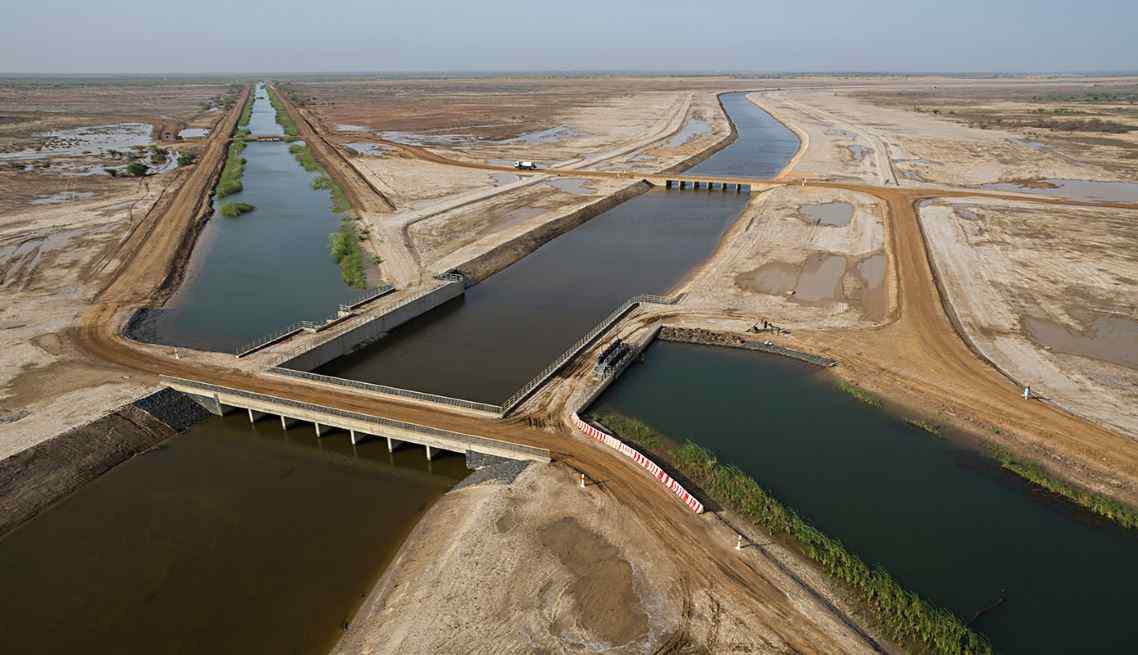Narmada Main Canal is a contour canal. It is the biggest lined irrigation canal in the world. It is about 458 km. long up to Gujarat -Rajasthan border. It has a capacity to flow 1133 cumecs (40000 cusecs) at its head-at kevadia and reducing to 71 cumecs (2500 cusecs) at the Gujarat -Rajasthan border.
The canal extends further in the state of Rajasthan to irrigate areas in Barmer and Jhalore districts of Rajasthan. The cross section of the canal, at its head is 73.1m x 7.6m (Bed width x Full supply depth), with 2:1 inner side slope. It has a velocity of water in the initial reach is 1.69 m/sec.
The Main Canal is lined with plain cement concrete to minimise sippage losses to attain higher velocity and to control the water logging in future. The lining work is carried out with the mechanized pavers. Such a large scale paving of concrete lining is done for the first time in India.
The Main Canal in its journey has to negotiate several water streams, rivers, roads, railways etc. This is possible by constructing appropriate structure on the canal. In all, there are 598 Structures on the Narmada Main canal.
Out of this 236 structures are cross drainage structures, comprising of 5 Aqueducts, 15 canal syphons, 182 drainage syphons, 33 canal crossing and one super passage.
There are 89 Regulating structures comprising of 1 Main HR, 44 Branch HR, 32 Cross Regulators and 12 Escapes. There are total 274 nos. of Road Bridge including national Highway, State Highway, MDRB, ODRB, VRB, and UVRB etc. (A statement showing the structures in different reach is kept at Annex-I).
It was the late Sardar Vallabhabhai Patel who conceived the idea of constructing a dam over the river Narmada in 1946-47 for the optimum use of Narmada waters for the welfare of the Nation.
Today The Sardar Sarovar Project is one of the largest water resources project of India covering four major states – Maharashtra, Madhya Pradesh, Gujrat and Rajasthan. Dam’s spillway discharging capacity 85000 cumec (30.0 lakhs cusecs) would be third highest in the world. With 1133 cumecs (40000 cusecs) capacity at the head regulator, and 532 km. length, the Narmada Main Canal would be the largest irrigation canal in the world.
The project will generate between 856 to 1007 million units per year of cheap and Eco-friendly, indigenous hydropower. Project would meet the drinking water needs of 9490 villages, 173 urban centers and benefits three sanctuaries.
Harnessing the untapped waters of the narmada for the survival of millions of people and environmentally sound sustainable development of the western India by providing the essence of Life-Water & energy.


